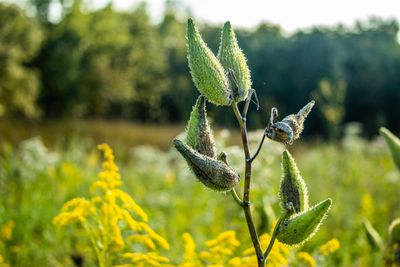Do I Deadhead Milkweed?
Milkweed is a glorious perennial wildflower native to North America. All through summer and into fall the plant is covered with flowers. It is a perfect plant in the native garden or just to colonize a vacant field. The blooms are excellent cut flowers, and in the garden, they are attractive to bees and butterflies. Deadheading milkweed is not necessary but it will keep the plants looking tidy and may promote further blooms. If you do it right after the first flowering, you can expect a second crop of blooms. Cut the blooms off just above a flush of leaves when milkweed deadheading. This will allow the plant to branch and produce more flowers. Deadheading can also prevent self-seeding if you don’t want the plants to spread. If you are growing milkweed in zones outside of USDA 4 to 9, you will want to leave the seed heads to mature and reseed the area or, alternatively, cut them off when brown and dry and save the seed to sow in spring.
Should I Prune Milkweed?
In cases where the plant performs as an annual, cut back the stems to the ground in fall and scatter seeds. New plants will grow in spring. Perennial plants will benefit from being cut back in late winter to early spring. Wait until you see new basal growth and cut the old stems back to about 6 inches (15 cm.) from the ground. Another method of milkweed pruning is to cut the plant back a third of its height. Make cuts just above a leaf bud to prevent unsightly bare stems. This is a really hardy plant in most regions and can withstand rather severe pruning to rejuvenate it or simply get the plant ready for new spring foliage and stems.
Tips on Milkweed Pruning
Note: Some gardeners may find the sap of the plant irritating. In fact, the name refers to the milky latex sap, which can cause skin irritation. Use gloves and eye protection. Use clean pruning tools that have been wiped with alcohol or a bleach solution. If pruning stems for cut flowers, sear the end with a lit match to seal the cut and prevent the sap from leaking out. If you wait to prune flowers, you can expect ornamental fruit which are also attractive in dried flower arrangements.
